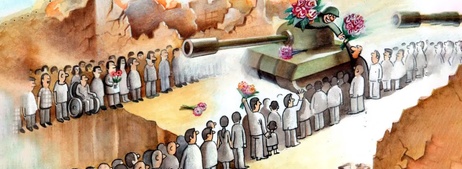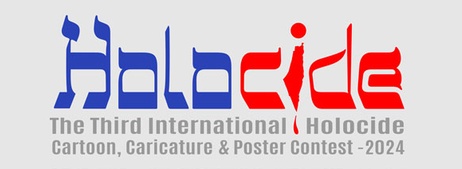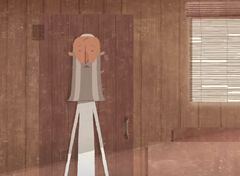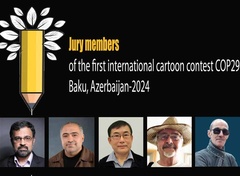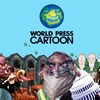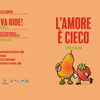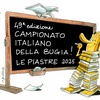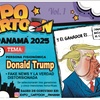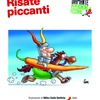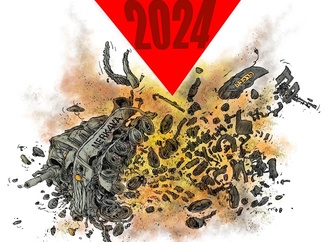The "New York Times" provokes heated reactions by renouncing political cartoons. Directly targeted by the measure, Patrick Chappatte is worried about freedom of expression. And that of the cartoonists
When humor is stopped in its tracks, what remains? "There is no limit to the humor that is at the service of freedom of expression because, where humor often stops, the place is left to censorship or self-censorship" , said Cabu, in 2012, three years before he died in the jihadist attack on Charlie Hebdo's editorial staff. The New York Times' decision to renounce political cartoons is causing a flood of reactions. And fears, especially. For freedom of expression, the independence of the media and democracy. Is the press drawing dead? Or, on the contrary, more powerful than ever?
A drawing deemed antisemitic
Awarded several times, Patrick Chappatte collaborated for more than twenty years with the International Herald Tribune first, then the New York Times , in its online and international version. He must now mourn. He cracked a long explanation on his blog. "Maybe we should start worrying. And we rebel. Press cartoons are born with democracy and they are attacked when freedom is, "he writes. Patrick Chappatte, who regularly sketches the news for Le Temps , is one of the two cartoonists affected. The other is Singapore's Heng Kim Song.
A drawing published in April depicting the Israeli prime minister a star of David around his neck and leashed by Donald Trump acted like a match in front of a gas can. Judged antisemitic, the caricature of the Portuguese Antonio Moreira Antunes triggered a lively controversy, amplified by social networks. Soon, the New York Times censured it. Publication director AG Sulzberger apologized and announced the end of the collaboration with syndicated cartoonists unrelated to the newspaper.
Monday, the New York Times took a step further, radical. But James Bennet, the head of the Opinions section, said in a written statement that the decision was already in the making before the controversy. "It has been more than a year since we are considering aligning international publishing with the national version by putting an end to daily political cartoons, and we will do so from July 1," he says, without giving more in the press. details. He assures that the newspaper "will continue to invest in forms of opinion journalism, including visual, which express the nuance, complexity and a voice of a diversity of points of view."
Victims of censorship
Really? In the United States, several cartoonists have been censored for failing to spare Donald Trump. Nick Anderson and Rob Rogers have even lost their jobs. In this context, the New York Times' decision acts as an extra nail embedded in the coffin of political drawing. Ann Telnaes, a caricaturist for the Washington Post website and a Pulitzer Press Drawing Prize winner in 2001, canceled her online subscription. "The New York Times has not supported cartoonists for years. His latest decision to abandon all the editorial cartoons is a further indication of their misunderstanding of the purpose of press drawing and its essential role in a free press, "she says.Time .
Read also: Anne Telnaes, the woman who munchs Trump
Liza Donnelly is just as worried and bitter. She draws for several media, including the New Yorker , the New York Times , CNN and CBS. "Chappatte is one of the best in the world," she says. "Caricatures can be controversial and we, the designers, can be misunderstood. But freedom of expression is crucial in all its forms - written or drawn. I am afraid that giving up press drawings is a choice based on the fear of not knowing how they will be perceived by the public. The best caricaturists do not work by resorting to stereotypes or tropes. Like Chappatte, they are thoughtful people who look at the world and give their opinion. We can not lose this valuable contribution! "
Older, cartoonist Jeff Danziger , who has been a newspaper delivery for the New York Times , says he has stopped trying to understand the newspaper. "But I do not think it has anything to do with freedom of the press. The Times is very heroic when it comes to opposing government interference. The explanation is generational. "On Twitter, Matt Wuerker , cartoonist at Politico , calls:" We need @PatChappatte and political humor - now more than ever! Let the Times know. "
Chappatte: "It's time to wake up to not let those who shout the loudest win"
The New York Times (NYT) published in its April 25 edition a press cartoon depicting Israeli Prime Minister Benyamin Netanyahu as a guide dog on a leash by a blind Donald Trump wearing a kippah. This caricature engendered readers' fury, the newspaper's apology, and the suppression of political press drawings in its pages. A "regrettable" choice for Chappatte, cartoonist for NYT, Le Temps and NZZ .
Le Temps: Following its publication, the "NYT" decided to give up the press drawings. Did you feel it coming?
Chappatte: Since 2013, we were two designers internally: me, who did two drawings a week, and a cartoonist from Singapore, who drew a drawing on Asia. The other days, the newspaper took over agency drawings from around the world. We enjoyed great visibility, because we were included on the website, social networks and my drawings were even translated since last year in Spanish and Chinese. But when this drawing from a Portuguese colleague appeared, the NYT handled this problem cascading and it sent a chill across the profession.
A month ago I received a prize for a drawing published in this newspaper and the congratulations of the publisher. There is a regrettable cause and effect relationship. I entered this media through the window, more than twenty years ago. The NYT'shistorical position was not to have a press cartoon, as if it were not subtle or controllable enough. It's a step back! They have the right, of course, but the context in which it was done leaves a very unpleasant taste. The terrain has become very slippery. It's a shame to react that way, because it sends bad signals. The NYT is a stallion to which the media refers. And he is today a very sad example.
Why have you announced on your site, en primeur, the stop of the drawings of press?
The management of this crisis is symptomatic. A month ago, when this drawing on Netanyahu appeared, netizens were rightly shocked, and fell on the NYT . Trump's son retweeted, Trump too, then Fox News and Breitbart talked about it. The newspaper regretted, apologized, but this was not accepted by the furious crowd. The NYT has published two editorials, including a very hard one by Bret L. Stephens , but there has been no analysis, of hindsight, on this situation. Why did this happen? What is a drawing? And why is this problematic? A few days later, the publisher announced the end of the use of agency drawings. They still wanted to keep the interior designers. I thought the bulk of the storm was over.
But they had handled this story so defensively that I did not see how to get to do press drawing normally. This has legitimized all attacks that social networks are customary. Then, they let me know that they were going to stop the press drawings in July. I decided to leave right away because the charm was broken. I then published this text , even if they had not yet communicated on this decision, because it goes well beyond me and the drawing of press. In this world we are quick to be shocked. The first voices, the most outrageous, that are heard on social networks define the whole discussion. Those who spoke first, a month ago, defined what the NYT was. The newspaper was trapped in these nets. Paradoxically, newsrooms do not seem to be prepared for the raging crowd that leads moral crusades on the internet.
What is the situation of cartoonists in the United States?
She is disturbing. Two of the best drafters, in my opinion, lost their jobs because their editors or headmasters were pro-Trump and found their drawings too critical of the president. It also happened to a friend of the Los Angeles Times, whose owner is also a fan of Trump, who was forced to leave. If he is re-elected and gets a majority in the wake of Congress, we will enter a really dangerous period for democracy. Freedoms are tested, even where they were thought to be acquired.
That's why there are such reactions on the networks, unsubscriptions and calls to write to the NYT . Americans feel it and worry. In the end, a caricature of Trump, for or against, is the same: talking about him. But strong men have very fine leather and his supporters manage to achieve success by triggering their fury. It's time to wake up to not let the party be won by those who shout the loudest. The drawings are pretexts, you have to worry about what it reveals. Beyond them, it is journalism that is targeted by this rage. The editors must be prepared and keep their cool.
Interviewed by Chamz Iaz


